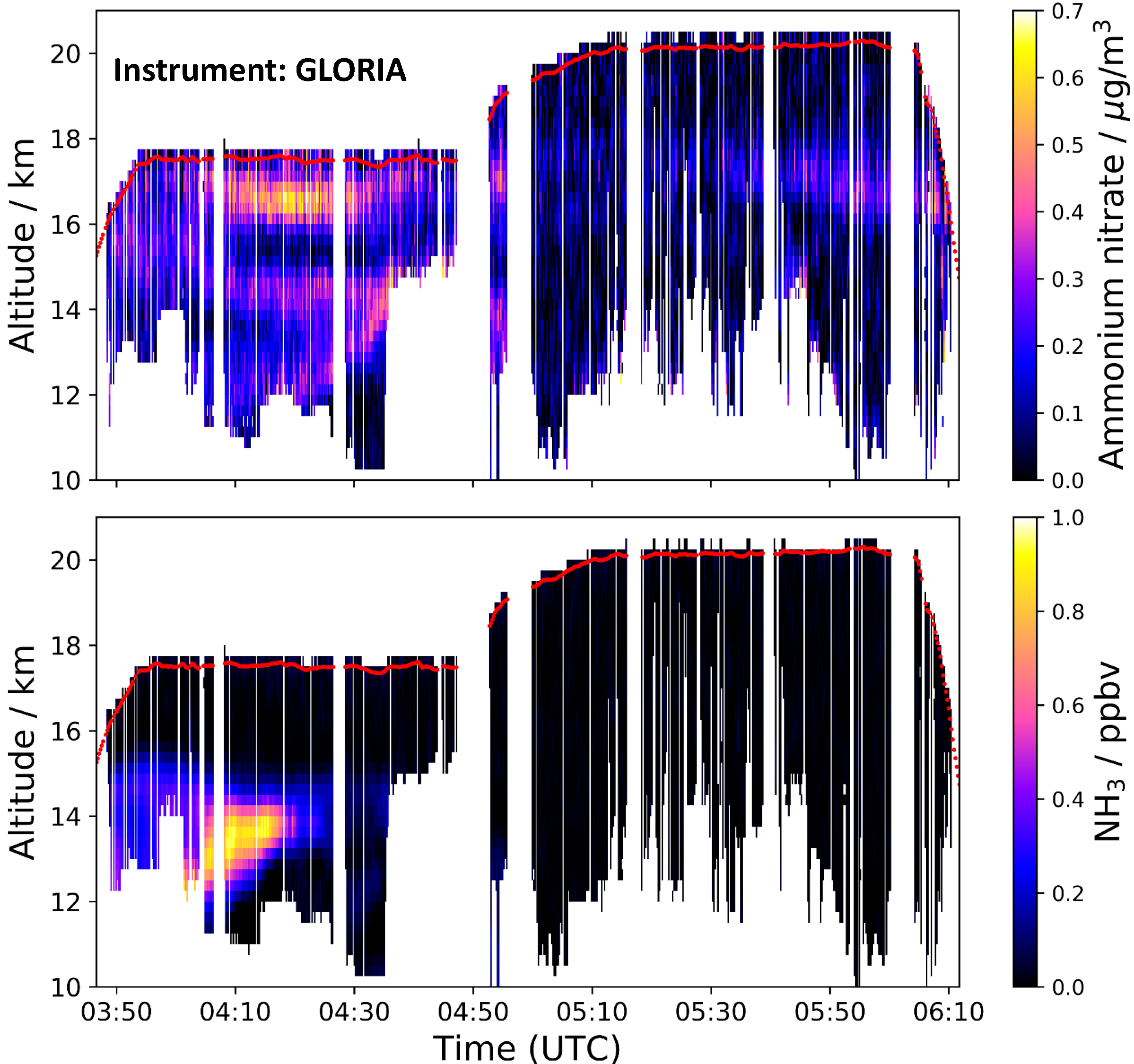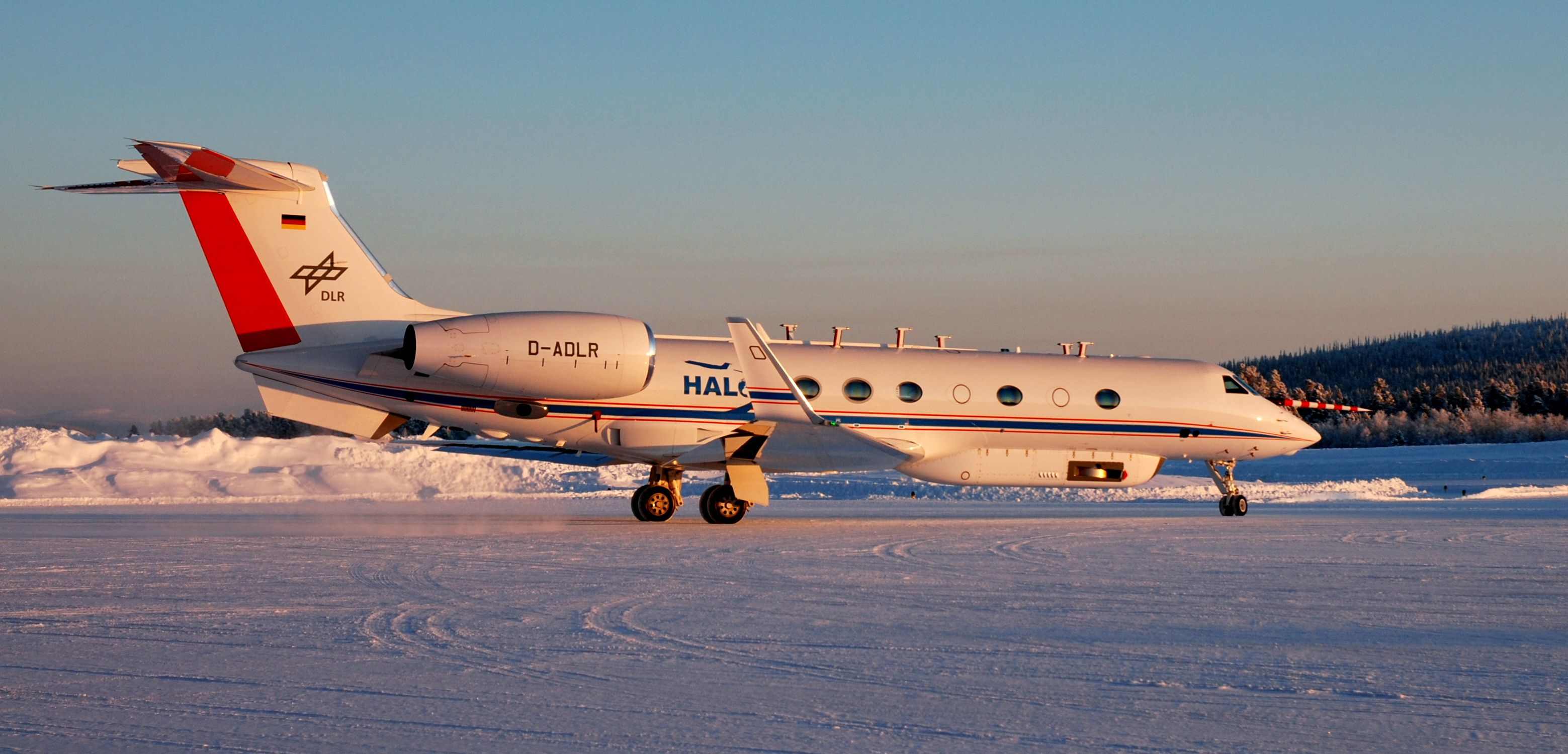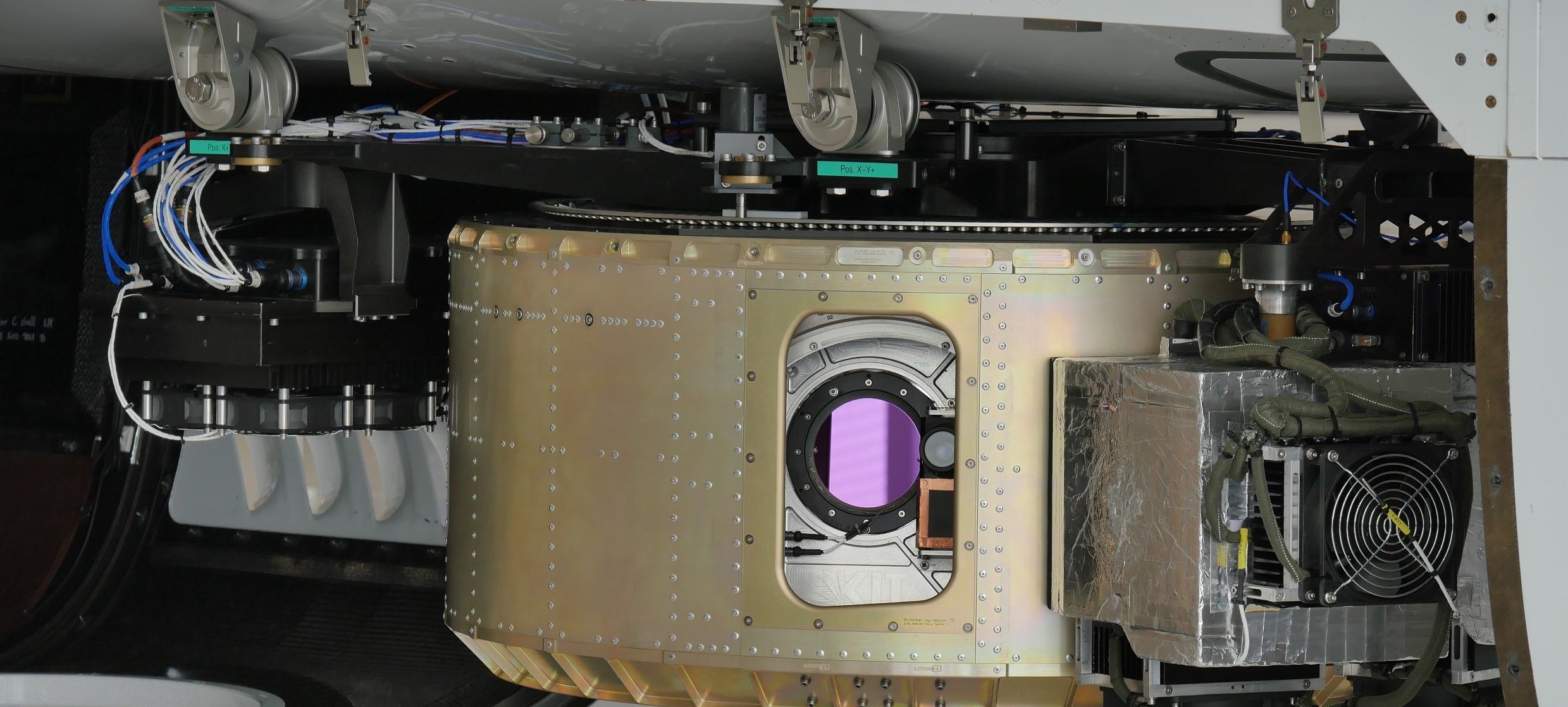Remote sensing using aircraft and balloons

The group FFB develops and operates limb-sounding FTIR spectrometers on balloon and aircraft platforms to measure vertically resolved distributions of temperature, water vapour and a wealth of trace gases (e.g. ozone, CH4, N2O, CFCs, HCFCs, HNO3, ClONO2, NO2, HNO4, CCl4, CF4, C2H6, SF6, OCS, SO2) and their isotopologues (e.g. HDO) as well as aerosols (NH4NO3(s), H2SO4(l)) in the Earth’s atmosphere.

Limb-scanning instruments like the balloon- and airborne-versions of MIPAS (Michelson Interferometer for Passive Atmospheric Sounding) have been deployed in numerous measurements campaigns from the Arctic to the Antarctic over 20 years.

The current "workhorse" of the group is the imaging FTIR spectrometer GLORIA (a common project between KIT and the Research Center Jülich) which has successfully been operated on the Russian aircraft M55 Geophysica and the German research aircraft HALO. In addition, flights with large stratospheric balloons were successfully carried out with the balloon version GLORIA-B. GLORIA is the first infrared limb-emission-imager with high spectral resolution to probe the state of the atmosphere with exceptional spatial resolution. As such it serves as pathfinder and showcase for possible future space-borne instruments.
In parallel to the measurement campaigns, we are working on miniaturizing the measurement technology. Novel technologies and manufacturing methods allow us to build significantly smaller and more robust instruments that can be deployed faster and more cost-effectively on high-flying carriers.

A further focus of FFB is the characterisation of the spectrometric and radiometric performance of imaging spectrometers and the development of algorithms to exploit the data generated by the instruments. In this field the group closely cooperates with space agencies and space industry to advance the use of IFTS from space.
